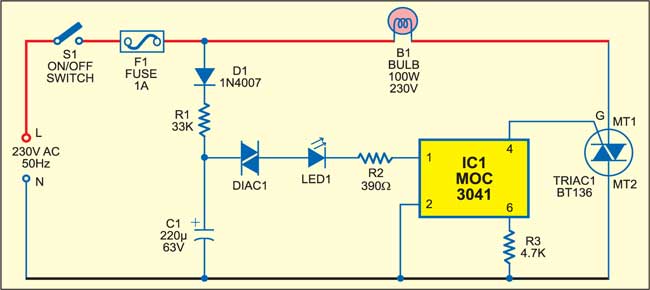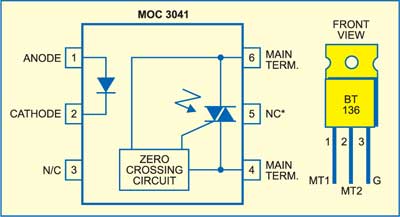 Christmas just would not be Christmas if you do not put a flashing star on your Christmas tree. Here is the circuit of such a flashing star.
Christmas just would not be Christmas if you do not put a flashing star on your Christmas tree. Here is the circuit of such a flashing star.

Fig. 1 shows the circuit of the flashing X’mas star. At the heart of the circuit is a diac that controls charging and discharging of an electrolytic capacitor and thereby flashing of the star. The rest of the circuit functions as a solidstate AC relay for lighting the bulb fitted inside the Christmas star.
When switch S1 is in ‘on’ position, mains voltage is rectified by diode D1 and capacitor C1 charges through resistor R1. When the voltage across C1 exceeds the breakdown potential of the diac, the diac conducts and the capacitor discharges through LED1, resistor R2 and the internal LED of optocoupler MOC3041 (IC1). This discharge of energy results in a brief flash of light.

Use of a zero-crossing optocoupler (IC1) to drive triac BT136 virtually eliminates radio frequency interference. Every time the optocoupler receives a pulse, the triac fires and the bulb glows.
This circuit operates directly from mains, so be careful to avoid lethal shock. Use of a low-leakage, good-quality capacitor rated more than 63V is recommended. Changing the capacitor’s value alters the speed of flashes.
Before assembling the circuit on a general-puspose PCB, refer Fig. 2 for the pin configurations of MOC3041 and triac BT136. Use IC base for MOC3041.






